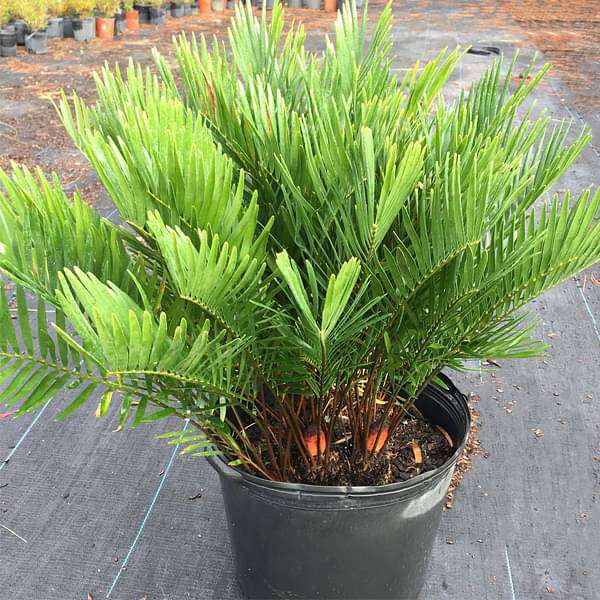
Zamia pumila - Plant
(MRP Inclusive of all taxes)
- Shipping ₹79 for entire order
- Dispatch in 7 days
- Country of origin: India

(MRP Inclusive of all taxes)
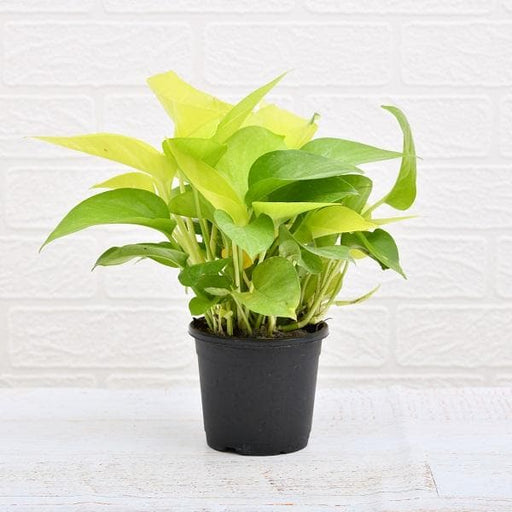 Save 29%
Save 29%
Air Purifier Money Plant with Pot The Air Purifier Money Plant, also known as Pothos or Epipremnum aureum, is a stunning indoor plant that...
View full details
 Save up to 15%
Save up to 15%
Peace Lily, Spathiphyllum - Plant The Peace Lily, scientifically known as Spathiphyllum, is a stunning houseplant celebrated for its elegant white...
View full details
 Save 25%
Save 25%
Jasminum sambac, Mogra, Arabian Jasmine - Plant Jasminum sambac, commonly known as Mogra or Arabian Jasmine, is a fragrant flowering plant...
View full details
 Save 18%
Save 18%
Combo Constituents Includes the Parijat Tree (Night-Flowering Jasmine), a culturally significant plant with fragrant flowers. Description The Pari...
View full details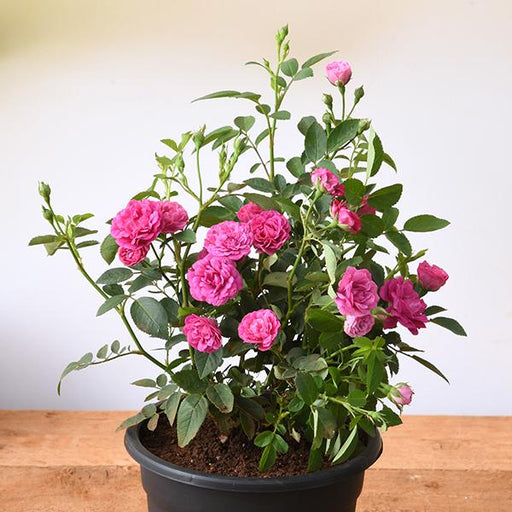
 Save 25%
Save 25%
Miniature Rose, Button Rose (Any Color) - Plant The Miniature Rose, also known as the Button Rose, is a charming and compact flowering plant that ...
View full details Save 25%
Save 25%
Damascus Rose, Scented Rose (Any Color) - Plant The Damascus Rose, also known as Rosa damascena, is a timeless symbol of beauty and romanc...
View full details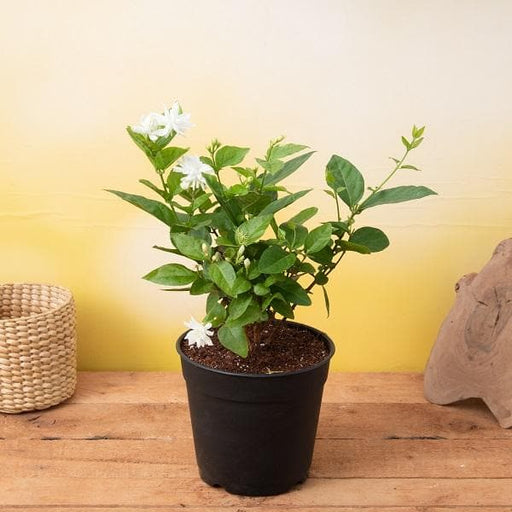
 Save 17%
Save 17%
Beautiful Fragrant Mogra, Arabian Jasmine Plant with Pot The Beautiful Fragrant Mogra, also known as Arabian Jasmine (Jasminum sambac), is...
View full details Save 15%
Save 15%
Pack of Vermicompost and Neem Cake for House Plants Transform your indoor garden with our premium Pack of Vermicompost and Neem Cake, spec...
View full details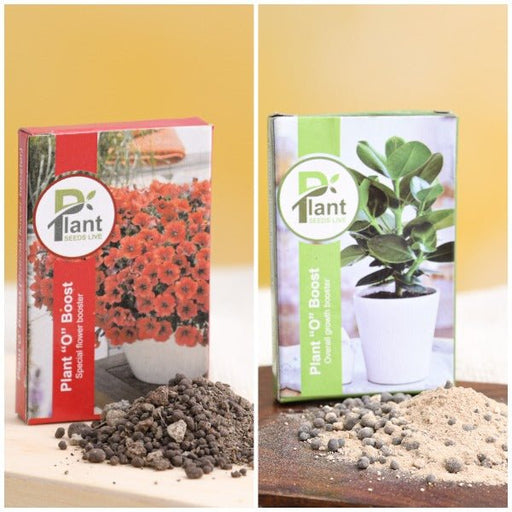
Pack of Plant Growth and Flower Boosters Unlock the full potential of your garden with our Pack of Plant Growth and Flower Boosters! This ...
View full details Save 38%
Save 38%
Combo of Jeevamrut and Neem Raksha for Easy Growth and Protection of Houseplants Transform your indoor garden with our exclusive combo of ...
View full details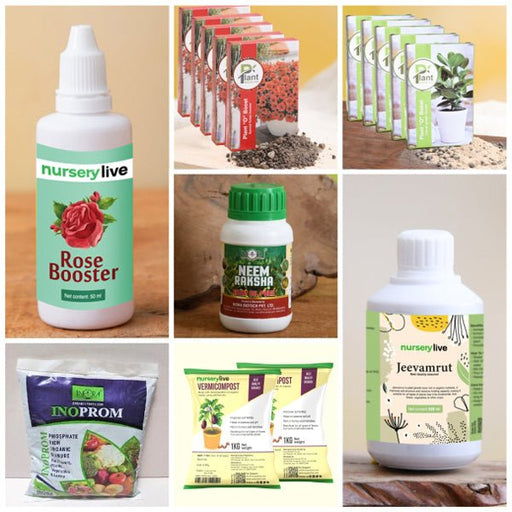 Save 22%
Save 22%
Plant Nutrients Kit (Pack of 16) for a Healthy Garden Transform your garden into a lush paradise with our Plant Nutrients Kit, featuring 1...
View full details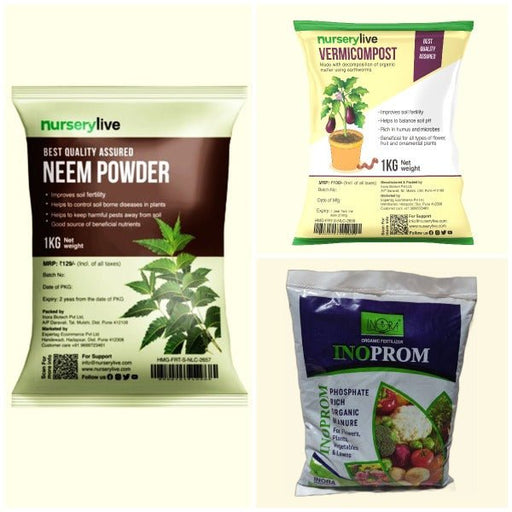 Save 16%
Save 16%
Combo of Top Plant Fertilizers Elevate your gardening game with our exclusive Combo of Top Plant Fertilizers, featuring two bags of premiu...
View full details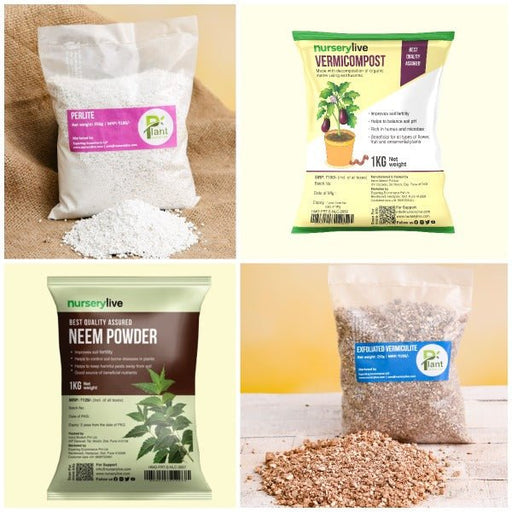 Save 24%
Save 24%
Pack of 4 Additives to Make Soil Healthy and Nutrient Rich Transform your garden into a thriving ecosystem with our Pack of 4 Additives de...
View full details Save 30%
Save 30%
Transform your gardening experience with our premium Combo of Perlite and Vermiculite. This unique blend is designed to enhance soil aeration and ...
View full details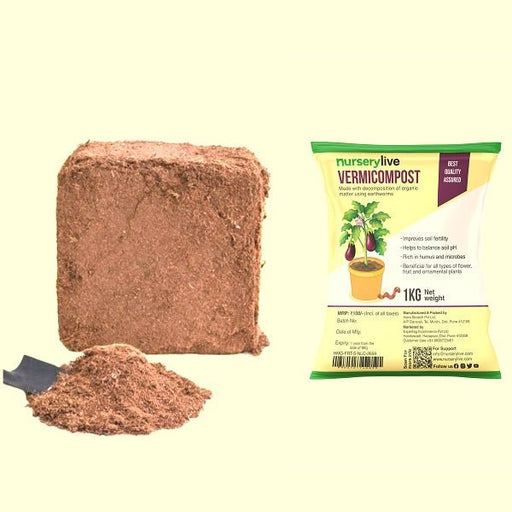 Save 27%
Save 27%
Combo of 2 Vermicompost and Cocopeat - Enrich Your Soil Naturally! Transform your garden into a thriving ecosystem with our Combo of 2 Ver...
View full details
 Save 35%
Save 35%
Best 6 Plants for Perfect Indoor Garden Transform your living space into a lush oasis with our curated collection of the Best 6 Plants for a...
View full details
 Save up to 50%
Save up to 50%
Mini Succulent Garden Pack Transform your space with our Mini Succulent Garden Pack, featuring a delightful collection of 4 any variety beautiful s...
View full details
 Save 30%
Save 30%
5 Best Fragrant Plants Transform your garden or indoor space into a fragrant paradise with our curated selection of the 5 Best Fragrant Plants. Th...
View full details
 Save 24%
Save 24%
Set of 2 Bonsai Looking Grafted Adeniums Transform your indoor or outdoor space with our exquisite Set of 2 Bonsai Looking Grafted Adenium...
View full details Save 45%
Save 45%
Top 4 Die Hard Succulents Pack Transform your indoor or outdoor space with our Top 4 Die Hard Succulents Pack, featuring a curated selecti...
View full details
 Save 30%
Save 30%
5 Best Indoor Plants Pack Transform your living space into a lush oasis with our '5 Best Indoor Plants Pack.' This carefully curated collection fe...
View full details
 Save 25%
Save 25%
Set of 4 Evergreen Air Purifier Plant Pack Transform your indoor space into a lush, green oasis with our Set of 4 Evergreen Air Purifier Pla...
View full details| SrNo | Item Name |
|---|---|
| 1 | Zamia pumila - Plant |
Zamia pumila, commonly known as the Dwarf Zamia, is a stunning cycad native to the tropical regions of Central America and the Caribbean. This slow-growing plant features glossy, dark green leaves that form a rosette, making it an attractive addition to any garden or indoor space. With its unique appearance and resilience, Zamia pumila is perfect for both novice and experienced plant enthusiasts.
What sets Zamia pumila apart is its ancient lineage, dating back over 200 million years, making it one of the oldest plant species on Earth. This plant not only adds a touch of prehistoric charm to your collection but also plays a vital role in its ecosystem by providing habitat and food for various wildlife species.
Special features of Zamia pumila include its ability to thrive in low-light conditions and its drought tolerance, making it an ideal choice for sustainable gardening. Its striking foliage and unique growth habit make it a conversation starter in any setting.
Zamia pumila plays a crucial role in its native habitat by supporting local wildlife and contributing to biodiversity. Its ability to thrive in poor soil conditions makes it an excellent choice for sustainable landscaping, helping to prevent soil erosion and promote ecological balance.
If you think caring for Zamia pumila is like raising a cactus in a snowstorm, think again! This little gem thrives on neglect, making it the perfect plant for those who can’t keep a houseplant alive. Just give it a well-draining soil, a sprinkle of water when it’s feeling parched, and watch it strut its stuff. It’s like the diva of the plant world—low maintenance but high on style!
Who knew that having a Zamia pumila in your home could be like having a personal cheerleader? This plant not only adds a tropical flair to your decor but also purifies the air, making it a two-for-one deal. It’s like having a roommate who pays rent in fresh oxygen and aesthetic appeal.
Want to multiply your Zamia pumila like rabbits? Propagation is your answer! This plant can be propagated through seeds or offsets, and it’s easier than pie—if pie were a plant. Just remember, patience is key; good things come to those who wait, especially when it comes to plant babies.
Zamia pumila is like that friend who can party anywhere—be it in bright light or the cozy shadows. It prefers bright, indirect sunlight but can tolerate low light like a champ. Just don’t throw it into a dark corner and expect it to thrive; it’s not a vampire, after all!
Think of Zamia pumila as a plant with a refined palate. It craves well-draining soil that’s rich in organic matter. A mix of potting soil, sand, and perlite is like a five-star meal for this beauty. If you serve it heavy, soggy soil, it might just throw a tantrum and sulk.
Watering Zamia pumila is like dating—less is more! This plant prefers to dry out between waterings, so don’t drown it in your affection. A good rule of thumb is to check the soil; if it’s dry an inch down, it’s time for a drink. Overwatering is the kiss of death, so keep that watering can in check!
If Zamia pumila had a favorite snack, it would be a balanced fertilizer. Feed it during the growing season with a diluted liquid fertilizer, and it’ll reward you with lush foliage. Just don’t overdo it; too much fertilizer is like too much cake—great in moderation, but a disaster if you go overboard!
Pests are like uninvited guests at a party, and Zamia pumila doesn’t take kindly to them. Keep an eye out for mealybugs and spider mites; they can crash the party and ruin the vibe. A little neem oil or insecticidal soap can send them packing, ensuring your plant remains the belle of the ball.
Zamia pumila is like that friend who looks great but has a dark side. While it’s stunning, it’s also toxic if ingested, so keep it away from curious pets and children. It’s a beautiful plant, but let’s not turn it into a horror story—admire it from a safe distance!
Deciding whether to keep your Zamia pumila indoors or outdoors is like choosing between a cozy blanket and a sunny beach. Indoors, it adds a touch of elegance to your space, while outdoors, it can bask in the sun and show off its tropical vibes. Just make sure it’s in a spot where it can shine!
Zamia pumila is the plant equivalent of a wise old sage. With proper care, it can live for decades, becoming a cherished part of your home. It’s like having a living heirloom that tells stories of your plant-parenting journey. So, nurture it well, and it might just outlive you!
This charming little plant, also known as the coontie, is a cycad native to Florida and the Caribbean. With its feathery leaves and sturdy stature, it’s like the cool kid of the plant world, thriving in sandy soils and sunny spots. Just don’t expect it to grow tall; it prefers to keep things low-key!
Caring for Zamia pumila is a breeze! Just give it well-draining soil, moderate sunlight, and occasional watering. Think of it as a low-maintenance friend who only needs a little love now and then. Avoid overwatering, or it might just sulk in soggy soil.
Yes, Zamia pumila is toxic if ingested. It contains compounds that can cause gastrointestinal distress in humans and pets. So, while it’s a lovely addition to your garden, keep it away from curious munchers. Think of it as the plant equivalent of a spicy dish—looks tempting, but best enjoyed from a distance!
Zamia pumila loves a sunny spot with well-draining soil. Think of it as a beach bum; it thrives in sandy, dry conditions. Whether in your garden or a pot on the patio, just ensure it gets plenty of light and a little room to spread its leafy arms.
Water Zamia pumila sparingly, like a cautious friend at a party. Allow the soil to dry out between waterings, typically every 2-3 weeks. In winter, it’s even less thirsty. Overwatering is a no-no; this plant prefers to sip rather than gulp.
Absolutely! Zamia pumila can be a fabulous indoor companion. Just ensure it gets bright, indirect light and a pot with good drainage. It’s like having a tropical vacation in your living room, minus the sand and sunscreen. Just don’t forget to give it a little love every now and then!
Watch out for pesky pests like scale and mealybugs that might fancy your Zamia pumila. They’re like uninvited guests at a party. A gentle wipe with soapy water or insecticidal soap can send them packing. Keep an eye out, and your plant will remain the belle of the ball!
Zamia pumila is not in a hurry; it’s more of a slow and steady type. Expect growth of about 1-2 inches per year. Patience is key! It’s like waiting for a fine wine to age—worth it in the end, but you’ll need to enjoy the journey!
Zamia pumila is not a fan of frost; it prefers to bask in warm temperatures. If you live in a frosty area, consider bringing it indoors during chilly months. Think of it as a snowbird—seeking warmth and sunshine while avoiding the cold.
Absolutely! Zamia pumila adds a unique touch to landscaping with its striking foliage and low maintenance needs. It’s like the stylish accessory that complements any outfit. Perfect for tropical gardens or as a focal point, it’s sure to turn heads and spark conversations!
Propagating Zamia pumila is a bit of a waiting game. You can do it through seeds or offsets, but patience is key. Seeds can take months to germinate, so grab a cup of coffee and settle in. It’s a slow process, but the reward is a new leafy friend!
Besides being a stunning addition to your plant collection, Zamia pumila is drought-tolerant and low-maintenance. It’s like the reliable friend who’s always there but doesn’t demand much. Plus, it can improve air quality, making your space feel fresher. Who wouldn’t want that